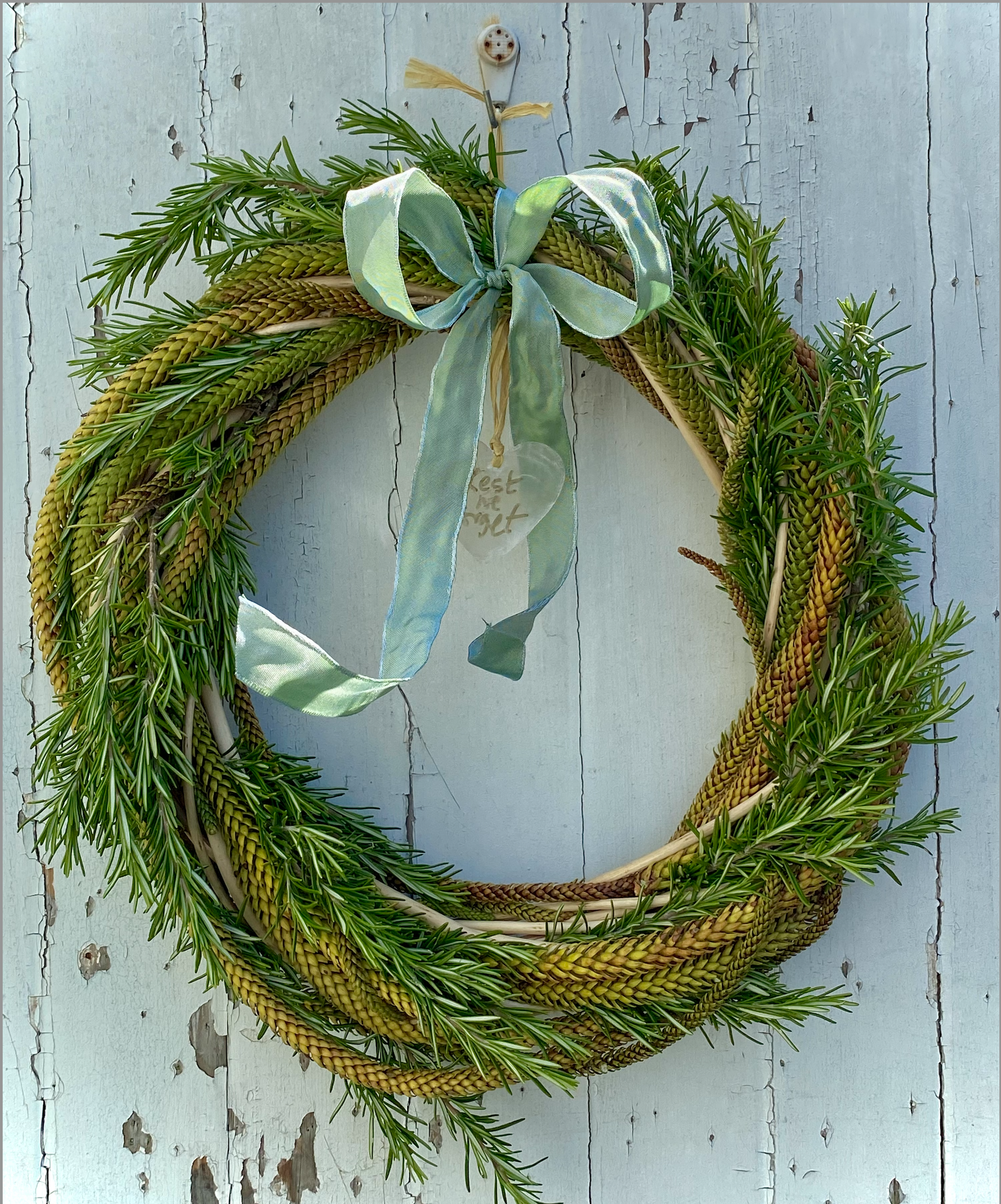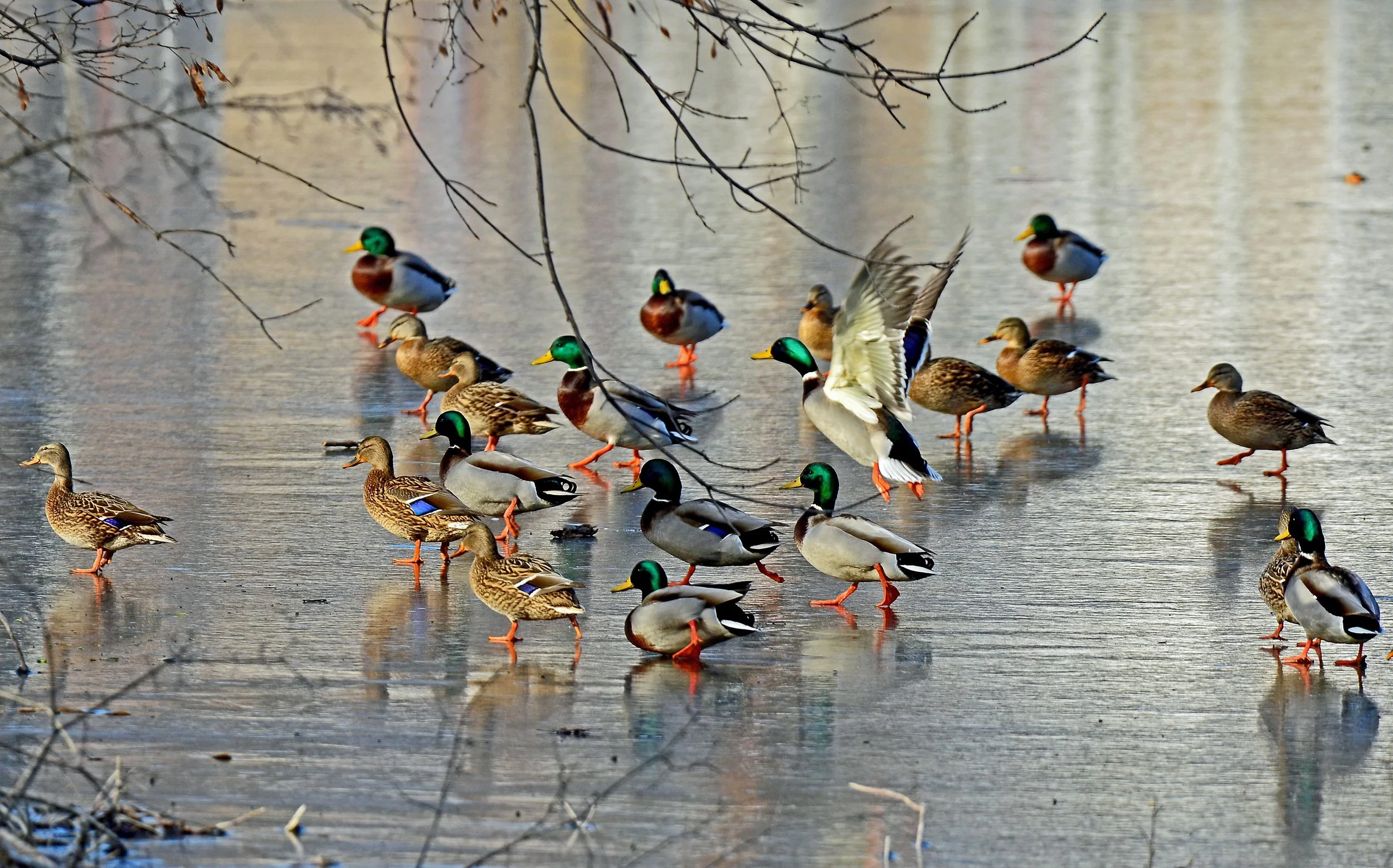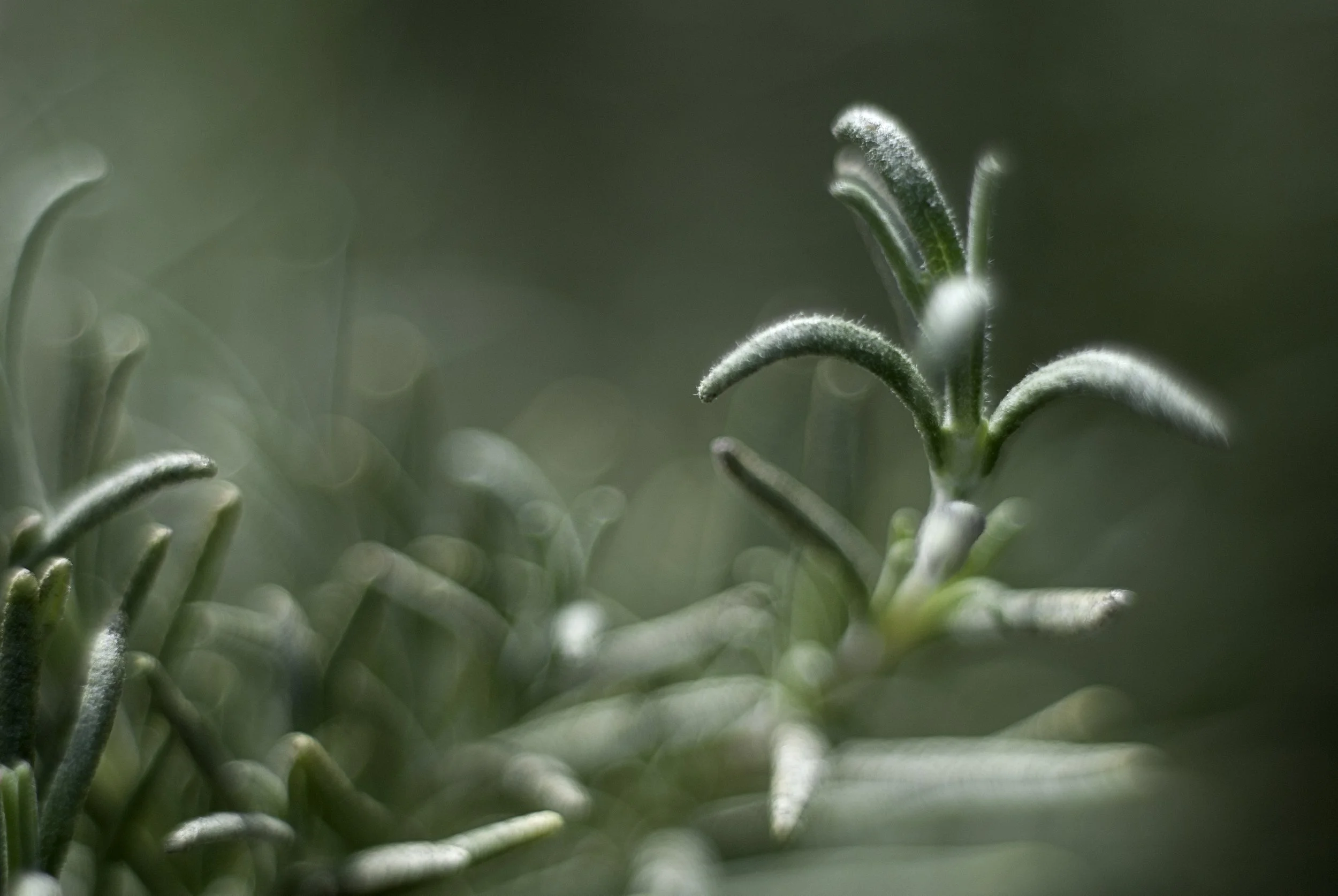Remembrance Day is a Memorial day that falls on 11 November to honour armed forces members who have died in the line of duty. Originally evolving from Armistice Day, on the 11th hour, of the 11th day, in the 11th month, folk stop for a minute silence to remember those no longer with us. In Australia, Anzac Day is reserved for veneration of fallen service men and women during World War One - it falls on April 25th annually - Lest we forget. Rosemary and Remembrance, features heavy on both days. With a swag of benefits, Rosemary has many applications beyond it’s culinary reputation.
Rosemary
When I moved to Australia I discovered Rosemary has a particular significance for Australians, as it's found growing wild on the Gallipoli peninsula, the site where the troops landed in 1915. A symbolic sprig is worn on the lapel of jackets by veterans and those attending the Anzac Day Dawn services and parades across the country. It's a Herb of Remembrance and a chaplet is often left on headstones at funerals or days of veneration to honor and remember deceased loved ones. The aromatic herb is believed to stimulate the brain and thus improve memory; since Anzac Day is a day of reflection and remembrance, it seems like a fitting choice of herb. It also flowers in April and May, when a small blue flower grows in the axils of the leaves.
The woody sweet scented evergreen was often fashioned into small posies, and handed to those bereaved. A tradition that seeded funeral wreaths perhaps? On more joyous occasions it was used in Bridal bouquets as a symbol of fidelity. While in the North of England superstitious folk believe a sprig of rosemary in a buttonhole bestows the wearer with success in all their tasks.
It was considered sacred to the ancient Egyptians, Romans and Greeks. While Christian folklore claims the plant can live to be thirty-three years old, the same age as Jesus Christ when he was crucified. In times past it was the go to remedy, for driving away nightmares when stuffed under a pillow. Thus making it ideal for use in Space clearing rituals in rooms where a child might be sleeping.
The herbaceous plant is classified as a stimulating essential oil and perhaps the alertness linkage is enhanced when adding crushed rosemary into a barrel of beer; as it’s said, those who drink the combo will be spared intoxication! That said it’s one of the herbs used in the making of vermouth.
Magical Folklore
Rosemary is a plant that reminds me of the Northern Hemisphere. It was always a kitchen staple in our herb garden back home and in Sydney it was one of the first plants I cultivated. A well established evergreen hedge now grows in my back garden. Druid folklore suggest a home where Rosemary thrives is a home where the lady of the house rules.... ssSHhhh!
There is much magical folklore relating to Rosemary - known also as a herb of protection, hung above a doorway, or planted outside the home to ward off negative energies. Some say it acted as a protective barrier against witchcraft itself, while in Europe it was also purported as an essential ingredient in rituals relating to banishing suspected witches!
Plants have links to planets, and rosemary is linked to the vigor of yang Sun. Not surprising given it flourishes in full sun and dry conditions. It’s name is translated as ‘dew of the sea’ and Rosemary is known to thrive best when located by the sea; to which I can vouch for. It makes a great addition to astrological magic and suitable for rituals on days when the Sun is the diurnal or nocturnal ruler — that’s daylight hours of Sundays and Wednesday nights.
SPACE CLEARING HERB
When I first learned to Space Clear, you are advised to work with tools that resonate - for you and your client. Smudge sticks are one such tool of the trade. The sticks fashioned from bundles of dried herbs used for burning at purification and ceremonial rituals. Generally speaking smudge sticks are more commonly made from sage. However, sage was less abundant, nor native and over farmed so I researched Rosemary and the resonance has persisted ever since. Rosemary is in fact one of the oldest forms of incense. In French hospitals it was common to burn rosemary and juniper berries to purify the air and prevent infection and promote healing.
MARTINMAS, BLESSING + WEATHER OMEN
Noting, 11 November is also St. Martin's Day or Martinmas. It’s also known as Old Halloween/ Old Hallowmas Eve owing to the adopting of Universal (Gregorian) calendar in 1752 when 11 days were omitted from calendar . In European agricultural circles 11/11 marked a natural winter's start pre the Universal Calendar. Samhain (aka Hallow’s Eve) was also believed to mark the beginning of Celtic New Year. In Ireland on the eve of Martinmas (Lá Fhéile Mártain), it was customary to preform a ritual house blessing. Given it was the start of a New Year, the sentiment was for protection for the year ahead. The traditional ritual involved the sacrificial bleeding of a single fowl. With the sacrificial blood collected then sprinkled on the threshold, in the four corners of the house or farm buildings for protection. Some folks, anointed family with a blood cross on their foreheads. If animals were not ritually sacrificed, then bloodletting was commonly preformed via ones own finger! Halloween also traditionally had bonfires (bonefire) that were believed to contained the bones of animal sacrifices.
Martinmas, was a traditional day for all manner of animal to be slaughtered — for preserving over winter, hence the feasting on animals was commonplace. But the ritual animal was not eaten, it's blood was used solely for the house blessing. The word ‘blessing’ comes from Middle English 'blessen', from Old English 'bletsian', 'to consecrate with blood’ and in Proto-West Germanic *blōdisōn means ‘to sprinkle, mark or hallow with blood’.
More Martinmas folklore from Co. Wexford, Ireland, denotes no boats will leave for sea on St. Martin's Eve (10 Nov) for it is said St. Martin rides the white horses across Wexford Bay bringing death to any who see him. Saint Martin is commonly shown on a white horse in painting and christian literature, however the roots of equine link may link back to Scottish Horseman’s Word ceremony held on 11 Nov, when young ploughmen were initiated into the world of men.
Weather lore notes a hard frost before 11 November is said to be a weather omen for a wet and very cold Winter. Folklore notes whatever the weather on St. Martin's Day, the opposite would hold true for Xmas. Therefore, if it was cold and icy at Martinmas, it would be mild by Yuletide - or if pleasant on 11 Nov, there would be a White Christmas. What will it be? N.H readers PM me with your weather insights:-). A rhyme in rural Britain notes.
'Ice before Martinmas* enough to bear a duck,
The rest of the winter is sure to be but muck!'
Personal Uses
Rosemary’s uses are many - from culinary, medicinal, pest or beauty tonic, you’re sure to find a personal means to honour the herb. Revered in French grooming circles - as a darkening hair tonic to rinse your hair. While in medieval Europe it was boiled in white wine and used as a face wash! The woody herbs circulation and stimulating properties are noteworthy and thus used to aid a nervous headache. Partnered with Potatoes in culinary terms— yet in companion planting the pair should keep their distance in the veggie plot. And in the linen cupboard, a sprig or two will deter vermin.
And last but by no means least, most year’s I make bunches of smudge sticks from my own herbaceous hedge - organic and pesticide free. Some years, lavender or sprigs of sage find there way into the mix, but Rosemary is the predominant herb. Fear not if spiritual smudging isn’t your jam, they it smoulder beautifully to repel pests like mosquitoes, minus the chemicals in commercial sticks. I’m harvesting a batch soon - under strict herbal harvesting conditions, moon phase and planetary conditions which are especially good for magical uses. This year I’m making limited edition Fresh Rosemary wreaths - DM if you’re a local.
And Happy Remembrance or Martinmas Day ⧇
ⓒ FENG SHUI ISM — Originally posted Nov 9, 2023 - Updated 2025















